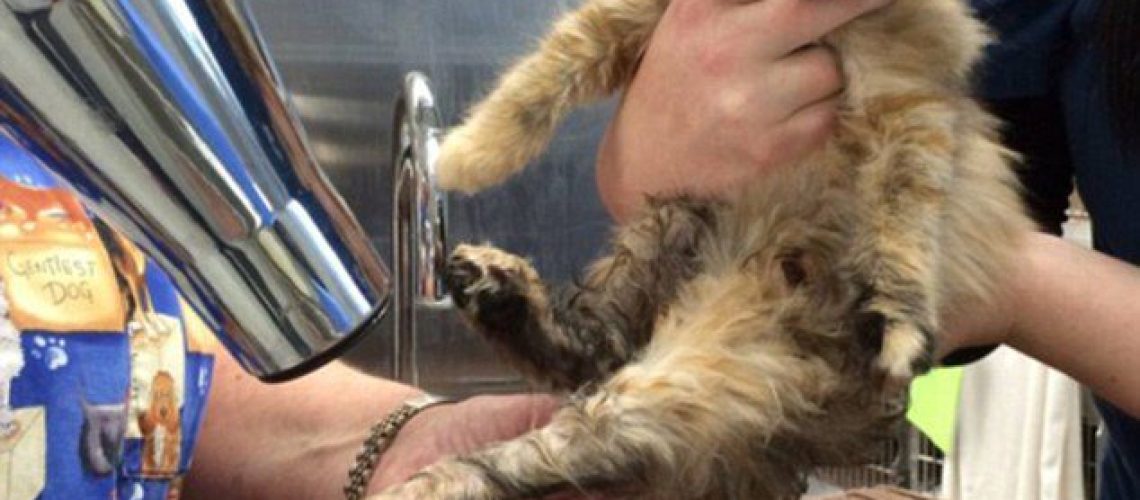Are you a cat lover? Do you worry about your furry friend's well-being during the chilly winter months? If so, then delving into the topic of frostbite in cats is essential for you. Understanding this subject will not only help you provide better care for your beloved pet but also give you peace of mind knowing that you can protect them from potential harm. In this article, we will separate fact from fiction and explore everything you need to know about frostbite in cats. So grab a cozy blanket, curl up with your kitty, and let's dive into this important topic together.
Key Takeaways:
- 1. Frostbite is a real threat to cats in cold weather and should not be dismissed as a myth or fiction.
- 2. Common signs of frostbite in cats include pale or discolored skin, blisters, and pain or sensitivity in the affected areas.
- 3. It is important for cat owners to take preventive measures such as providing warm shelter, limiting outdoor exposure during extreme cold, and using protective clothing.
- 4. Immediate veterinary attention is necessary if frostbite is suspected in a cat, as it can lead to tissue damage and long-term complications if left untreated.
- 5. Educating oneself about the risks and symptoms of frostbite in cats can help ensure prompt action and better outcomes for feline companions during winter months.
What is Frostbite in Cats and How Does it Happen?
Frostbite in cats occurs when their body tissues freeze due to exposure to extremely cold temperatures. It happens when the blood vessels constrict, reducing blood flow to certain areas of the body. When these areas don't receive enough blood, they can become damaged and even die.
Cats are susceptible to frostbite because their fur may not provide enough insulation in very cold weather. Additionally, cats may be exposed to freezing temperatures if they are left outside for extended periods without shelter or if they accidentally get trapped in a cold environment.
Causes of Frostbite in Cats:
- Prolonged exposure to extreme cold
- Inadequate shelter or protection from the elements
- Accidental confinement in a cold environment
How Frostbite Happens:
When a cat is exposed to freezing temperatures, the body tries to protect itself by constricting blood vessels near the skin's surface. This helps conserve heat and redirect warm blood flow to vital organs. However, this defense mechanism can also lead to frostbite in certain areas where blood flow is significantly reduced.
The extremities, such as the ears, paws, tail, and nose, are most vulnerable as they are farther away from the cat's core body heat. These areas have less insulation and more exposed skin compared to other parts of the body.
Which Parts of a Cat's Body are Most Susceptible to Frostbite?
Head and Ears
The head and ears of a cat are particularly vulnerable to frostbite. These areas have less fur coverage compared to the rest of the body, making them more exposed to extreme cold temperatures. The thin skin on the ears and nose can quickly freeze when exposed to freezing conditions for an extended period.
Paws and Tail
Cats' paws and tail are also susceptible to frostbite. The paws come into direct contact with icy surfaces, increasing the risk of freezing. Additionally, cats often wrap their tails around their bodies for warmth, but if the tail is exposed to cold temperatures for too long, it can suffer from frostbite as well.
Tips:
- Keep your cat indoors during extremely cold weather to minimize exposure.
- Provide warm bedding or blankets for your cat to snuggle in.
- Consider using booties designed specifically for cats to protect their paws from freezing surfaces.
How Can You Recognize if Your Cat Has Frostbite?
Frostbitten areas on a cat's body may appear pale, grayish-white, or bluish in color. The affected skin may feel cold or hard to the touch. In severe cases, blisters or ulcers may develop. It's important to note that frostbitten areas are painful for cats, so they may show signs of discomfort such as limping or excessive licking.
If you suspect your cat has frostbite, gently examine their body for any abnormal discoloration or texture changes. However, it's crucial not to rub or massage the affected area as this can cause further damage.
What Not To Do:
- Do not apply direct heat like hot water or heating pads as this can cause burns.
- Avoid rubbing or massaging the frostbitten area, as it can worsen tissue damage.
Is Frostbite Common in Cats or Rare?
Frostbite in cats is relatively rare compared to other cold-related conditions. Cats have a remarkable ability to regulate their body temperature and seek warmth when needed. However, certain factors increase the likelihood of frostbite, such as prolonged exposure to freezing temperatures, wet fur, and inadequate shelter.
While frostbite may not be common, it's essential for cat owners to be aware of the risks and take necessary precautions during extreme weather conditions.
What to Do If You Think Your Cat Has Frostbite?
If you suspect your cat has frostbite, it's crucial to seek veterinary care immediately. Frostbite can lead to tissue damage and infection if left untreated. While waiting for professional help, you can gently wrap your cat in a warm blanket or towel to provide temporary warmth.
Avoid attempting any home remedies or applying ointments without professional guidance, as they may not be suitable for treating frostbite in cats.
Remember:
- Prompt veterinary attention is crucial for proper diagnosis and treatment.
- Keep your cat warm while waiting for professional help.
Can Frostbite Cause Long-Term Problems for Cats?
Yes, severe cases of frostbite can lead to long-term problems for cats. Tissue damage caused by frostbite may result in necrosis (cell death) and subsequent complications. In some cases, amputation of affected body parts may be necessary if the tissue cannot recover.
Additionally, cats that have experienced frostbite are more susceptible to future episodes due to compromised blood flow and decreased insulation on previously affected areas.
Tips:
- Preventing frostbite is crucial to avoid potential long-term problems.
- Seek immediate veterinary care if you suspect frostbite to minimize the risk of complications.
Tips to Prevent Frostbite in Cats During Cold Weather
- Keep your cat indoors during extremely cold temperatures.
- Provide a warm and cozy indoor environment for your cat with comfortable bedding.
- If your cat goes outside, limit their time outdoors and provide access to a sheltered area.
- Consider using clothing or specially designed cat jackets to provide additional insulation.
- Check your cat's paws regularly for signs of frostbite or ice accumulation between the toes.
- Ensure fresh water is available at all times, as dehydration can increase the risk of frostbite.
Remember, prevention is key when it comes to protecting your feline friend from the dangers of frostbite. By taking these precautions, you can help ensure your cat stays safe and comfortable during cold weather conditions.
In conclusion, frostbite in cats is a serious condition that can cause harm to their paws and other body parts when exposed to extreme cold. It is important to separate fact from fiction and take proper precautions to keep our furry friends safe during winter.
How does frostbite affect cats?
When frostbite is severe, the affected areas will become necrotic or die. As the tissue begins to die, it turns a dark blue or black color. After several days to weeks, the dead tissue will slough off. During this process, pus may form or the tissue may develop a bad odor, which is caused by a secondary bacterial infection.
What does frostbite look like on cats?
What are the signs of frostbite in cats? Frostbite in cats can be identified by the presence of cold, delicate skin that may have a discolored appearance (white, pale, gray, blue, red, deep purple, or black). Blisters or ulcers (sores) may also develop on the skin, and eventually, the affected skin may die or slough off.
At what temperature do cats get frostbite?
Cats can experience frostbite similar to humans when exposed to temperatures below 32 degrees Fahrenheit/zero degrees Celsius. This is a common skin injury in cats, particularly on their ears, in regions with cold climates.
How do you prevent frostbite in cats?
According to Katribe, if the weather is too cold for you to be outside, it is probably too cold for your pet as well. It is safer to stay indoors. However, if your cat enjoys playing in the snow, you can consider dressing her in suitable winter clothing such as a jacket or sweater, and applying paw balm or Vaseline to protect her paws.
What are the permanent damage of frostbite?
Frostbite is a condition that can occur in extremely cold temperatures. It occurs when body tissues freeze, and if not treated promptly, can lead to permanent damage. In the most severe cases, amputation of the affected body part may be necessary.
What does frostbite damage look like?
When the skin becomes white or blue-gray and you can no longer feel cold, pain, or discomfort in that area, it is a sign of loss of sensation. The muscles and joints may cease to function properly. After rewarming, large blisters appear within 24 to 48 hours. The tissue then becomes black and rigid, indicating its death.

















